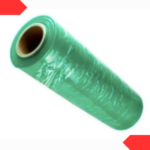Oxy-Biodegradable Films
Oxy-biodegradable LDPE films are LDPE films that have been manufactured with the addition of oxo-biodegradable additives. These additives are typically based on transition metal salts and/or organic compounds that catalyse the degradation process of LDPE films.

Here are some important points to understand about oxo-biodegradable LDPE films:
Degradation process:
Oxo-biodegradable additives promote the degradation of LDPE films through a two-step process. First, the films undergo oxidation when exposed to oxygen and UV light, which leads to the fragmentation of the material into smaller pieces. Second, the resulting fragments are more susceptible to microbial activity, allowing for subsequent biodegradation.
Timeframe of degradation:
The oxo-biodegradation process can vary in terms of the timeframe required for complete degradation. The additives are typically formulated to accelerate the initial oxidation and fragmentation stage. The subsequent biodegradation may occur in soil, water, or other natural environments, depending on the specific conditions and microbial activity.
Environmental impact:
Oxo-biodegradable LDPE films are often promoted as a solution to address the issue of plastic waste. However, there is ongoing debate about their environmental impact. Concerns have been raised regarding the potential release of microplastics during the fragmentation process and the long-term persistence of these microplastics in the environment.
Certification and standards:
Oxo-biodegradable LDPE films may comply with specific standards or certifications, such as ASTM D6954 or ISO 17556, which define the requirements for the oxo-biodegradable process and the resulting biodegradation of plastics.
Disposal considerations:
Oxo-biodegradable LDPE films should be disposed of properly to maximize the potential for biodegradation. They are generally not suitable for recycling alongside traditional LDPE materials. Proper disposal methods may include dedicated waste streams that facilitate appropriate degradation, such as industrial composting or specialized waste treatment facilities.


